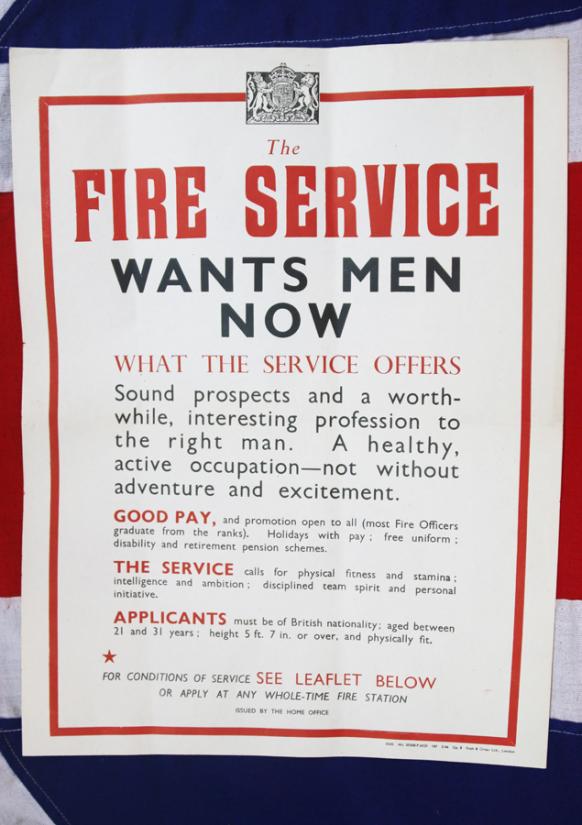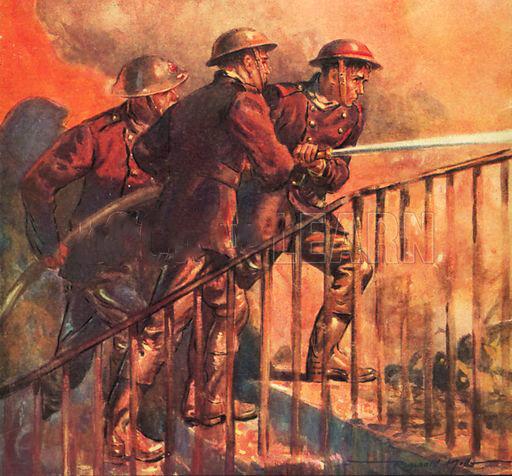An Original King George VIth Fire Service Recruitment Poster By Fosh and Cross
In the first.22 nights of air raids, from Sept 1940, firefighters fought nearly 10,000 fires.
Bombings often occurring while the River Thames was at low tide meaning access to water was made even more difficult. Vehicles became vital in transporting water around the city. Steel frames were fitted to lorries to enable them to carry up to 1,000 gallons of water. Meanwhile, to reduce the workload of the fire service, small fires were dealt with by 'street fire parties' – civilians who were given and taught to use stirrup pumps.
The public's opinion of the fire service changed significantly as a result of the Blitz. During the 'phoney war', firefighters had been thought of as 'army dodgers'. But, in 1940 this attitude changed – our firefighters became known as 'the heroes with grimy faces'. Two days into the Blitz - Churchill told the House of Commons that Adolf Hitler 'hopes by killing large numbers of civilians, that he will terrorise and cow the people of this mighty imperial city... Little does he know the spirit of the British people.'
The Auxiliary Fire Service
As the political climate intensified in Europe during the late 1930s, an Act of Parliament was passed to authorise the formation of a voluntary fire service. The Auxiliary Fire Service (AFS) formed in January 1938 and fire stations were set up in schools, garages and factories.
A recruitment drive was launched, with over 28,000 firefighters needed to support the Brigade's 2,500 officers and firefighters. However, as most young men had joined the army, the AFS welcomed those too old or too young to go to war. It also marked the first time women joined the Brigade.
Did women fight fires in WWII?
Though women did train, they didn't actually fight fires in the Second World War. They became fire watchers and drivers, and managed the communications networks. A rank system for women of the fire service was developed during the war to recognise their service and bravery – many were awarded for their remarkable achievements.
By 1943 over
70,000 women
had enrolled in the NFS in the United Kingdom. When peace was declared, London's fire service had attended over 50,000 calls though tragically, 327 of London's firefighters lost their lives. It's a sacrifice we'll never forget.
We never normally comment on the investment potential of any collectable, but the potential for all underpriced WW1, WW2 etc. posters may be incredible, for example the more famed original poster, 'Keep Calm and Carry On' can now sell for over £20,000.
Good condition 15 inches x 19.75 inches
Code: 23847
295.00 GBP




